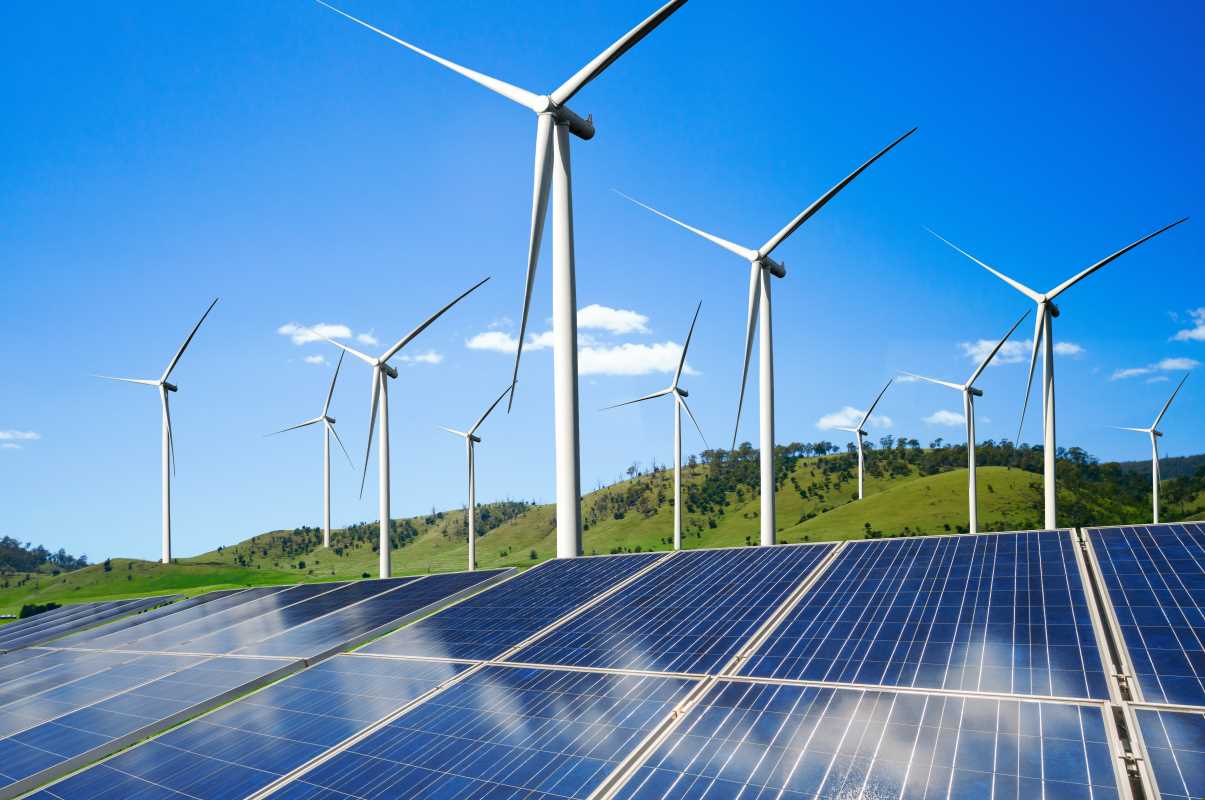The growing recognition of climate change's risks has sparked an international movement toward sustainability, with carbon neutrality becoming a central goal for countries, businesses, and communities. Carbon neutrality refers to the practice of balancing emitted carbon dioxide (CO2) with an equivalent amount of removed CO2 or offset emissions. To achieve this, the transition to renewable energy is at the heart of many global efforts. Renewable energy technologies play a crucial role in reducing carbon footprints and transitioning away from fossil fuels, making them indispensable in the pursuit of carbon neutrality.
The Importance of Renewable Energy in Achieving Carbon Neutrality
The energy sector is the largest source of global carbon emissions, responsible for approximately 73% of the world’s CO2 emissions. Fossil fuels—coal, oil, and natural gas—have long powered industries, transportation, and electricity generation, but they also release vast amounts of carbon dioxide when burned. In order to meet global carbon-neutral objectives, it is essential to phase out fossil fuel dependence and replace it with clean, renewable sources of energy that do not contribute to atmospheric pollution.
Renewable energy sources, including solar, wind, hydropower, geothermal, and biomass, offer a sustainable alternative to fossil fuels. They produce little to no greenhouse gas emissions during operation, making them a key component in the fight against climate change. Furthermore, renewable energy can be locally sourced, reducing the need for fossil fuel imports and promoting energy security.
Key Renewable Energy Technologies Driving Carbon Neutral Goals
Several renewable energy technologies are paving the way for achieving carbon neutrality. These innovations provide environmental benefits and economic opportunities, such as job creation in green industries. Below are some of the most prominent renewable technologies that are making an impact.
1. Solar Energy
Solar energy is one of the most widely used and accessible renewable energy technologies. Solar panels, which capture sunlight and convert it into electricity, have become increasingly efficient and affordable over the past decade. As the technology has matured, the cost of solar energy has plummeted, making it a competitive alternative to fossil fuels.
Large-scale solar farms are now able to produce significant amounts of energy, while residential and commercial rooftop solar installations offer a decentralized energy solution. Advances in solar energy storage systems—such as batteries—are allowing excess solar energy to be stored and used at night or during cloudy periods, addressing one of the main challenges of intermittent renewable energy sources.
Solar power is a cornerstone of many nations’ carbon-neutral strategies because it reduces reliance on fossil fuels for electricity generation.
2. Wind Energy
Wind energy is another rapidly growing renewable technology that plays a crucial role in reducing carbon emissions. Wind turbines use the kinetic energy of wind to generate electricity, and large-scale wind farms have become a common sight in many parts of the world, especially in coastal and open plains areas where wind conditions are favorable.
The technology behind wind turbines has also advanced considerably. Modern turbines are more efficient, powerful, and cost-effective than ever before. Offshore wind farms, which take advantage of strong, consistent winds at sea, are poised to play a major role in supplying energy to densely populated regions. The global wind energy sector is expected to continue expanding, providing clean energy while displacing fossil-fuel-based electricity.
3. Hydropower
Hydropower, the generation of electricity from flowing or falling water, has been in use for over a century and remains a major contributor to global renewable energy capacity. Dams and hydroelectric plants harness the energy from rivers, lakes, and waterfalls to produce electricity. In some cases, hydropower is used to store energy, releasing it when demand spikes or during low-production periods for other renewable energy sources.
However, there are environmental and social concerns associated with hydropower, such as ecosystem disruption and displacement of communities. As such, the focus has shifted to developing more sustainable hydropower projects, including small-scale hydro systems, which can provide renewable energy without the negative impacts of large dams.
4. Geothermal Energy
Geothermal energy uses the heat from the Earth’s interior to generate electricity or provide direct heating. Geothermal power plants typically harness the heat from hot springs or geothermal reservoirs to produce steam, which is then used to drive turbines connected to electricity generators.
Geothermal energy is a highly efficient and reliable source of renewable energy. Unlike solar or wind, it does not depend on weather or time of day, providing a consistent power source. Geothermal energy is particularly effective in regions with volcanic activity, such as Iceland and parts of the United States, where geothermal reservoirs are abundant.
5. Biomass and Bioenergy
Biomass energy is derived from organic materials like wood, agricultural residues, and waste. When burned, biomass produces heat that can be converted into electricity or used for heating. Biomass can also be converted into biofuels, such as ethanol and biodiesel, to power vehicles and machinery.
While biomass has lower carbon emissions than fossil fuels, it is essential to manage it sustainably to prevent deforestation and other negative environmental impacts. If sourced responsibly, however, biomass can be a valuable renewable energy source, reducing waste and creating a closed-loop system in which carbon emissions from biomass are offset by the carbon absorbed by plants during their growth.
The Role of Energy Storage and Grid Modernization
While renewable energy technologies are at the forefront of carbon-neutral goals, one of the key challenges to their widespread adoption is intermittency. Solar and wind energy are weather-dependent, meaning that their production is variable. Advanced energy storage systems are essential to ensure a stable energy supply.
Battery storage technology, such as lithium-ion and emerging solid-state batteries, allows excess energy generated by solar or wind farms to be stored and deployed when needed. This reduces the reliance on fossil-fuel-powered backup plants and ensures that renewable energy can be harnessed and used continuously.
Grid modernization is necessary to integrate decentralized renewable energy sources into the existing energy infrastructure. Smart grids, which use digital technologies to monitor and manage energy distribution, allow for better coordination between energy production and consumption, improving the efficiency and reliability of renewable energy systems.







